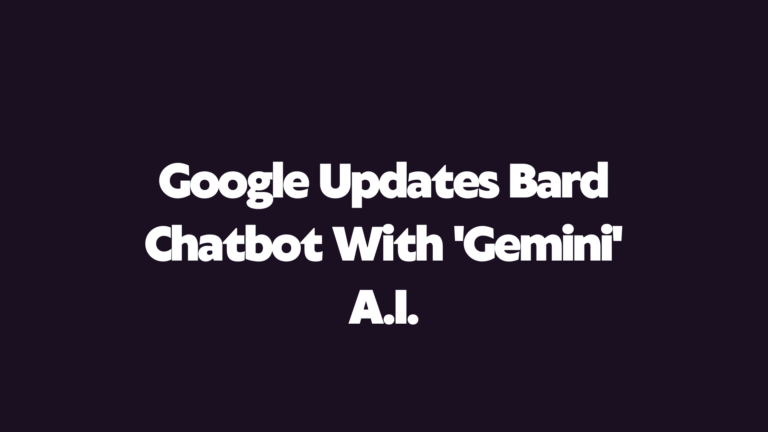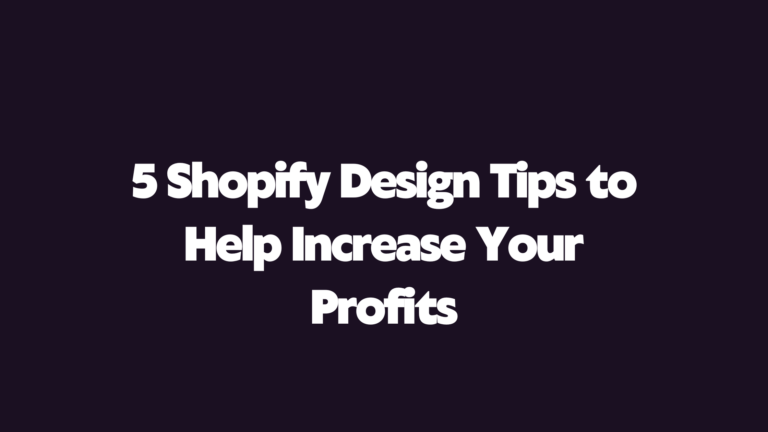When you hear people talking about doing SEO, they are referring to on-page SEO.
It includes optimising your;
- page title
- subheadings
- meta descriptions
- and other parts of your site’s code
This action optimises your page structure for search engines to find and crawl your pages.
It is essential to do on-page SEO as it results in more traffic and increased sales.
Before anything else, it is crucial to remember that keywords are the foundation of SEO, so you should make sure you handle them before taking any other step.
Shopify SEO (search engine optimization) is one of the most important things you can do to increase your store’s revenue.
This guide will help you optimize every page of your Shopify store for search engines like Google, Bing, and Yahoo.
Don’t forget to check out the Shopify store case study for more tips!
The Importance of On-page SEO

Search engines crawl your site to try and comprehend its contents. Google indexes your site pages to show up when a potential buyer searches for a product available in your store.
On-page SEO is all about increasing the user-friendliness of your shop. It makes navigating your page easy for search engines and understanding its contents easy for search engine users. An e-commerce site with excellent on-page SEO can be compared to a neatly-organised physical shop with defined signage, shelves, cabinetry, and sections. On the other hand, a terrible on-page SEO is a physical store with mixed-up products, all with no labels.
Undoubtedly, the well-organised shop will attract more buyers than its haphazard counterpart. You might have excellent content, incredible products, and unique selling points, but without performing on-page SEO, Google search engines will find it difficult to discover you.
On-page SEO Checklist

Individual pages will require work and many hours to prepare for ranking. This is because you will compete with some already existing powerful brands. So, if you want to ensure your product pages are well optimised, follow this checklist:
- Conduct a keyword research
- Include a meta title (page title)
- Use meta descriptions
- Include Image Alt tags
- Use a URL
- Internal linking
- Include headings and subheadings
1. Keyword Research
Find your money topics!

Keyword research is an important part of SEO, and it’s one of the first things you should do when getting started with optimizing your site. It’s worth noting that keyword research is different than keyword optimization—and it’s not something you can do in a day or two. You need to spend time researching the best keywords to use on your website, as well as how they’ll help you improve search engine rankings and traffic.
There are many benefits to doing keyword research for ecommerce SEO. Here are just a few:
- Better customer experience: Your customers will have an easier time finding what they’re looking for if you use the right keywords in your content and on your site.
- This will also make it easier for search engines to see what’s relevant and valuable about your products or services.
- Increased traffic from organic search: When people search for a product or service related to yours, they’ll find yours quicker than if there was no keyword research done beforehand.
- The more people who visit your store/website organically (without having clicked through an ad), the better your chance of closing sales!
Use tools such as Google Search Console and other tools to determine the search volume of keywords and get keyword ideas.
Search volume refers to the number of monthly searches for a particular keyword. Each page on your site may rank for different keywords. Keyword research is your strategy to build on top of what is already working for your Shopify store.
2. Meta Titles for your Shopify products

A product page or meta title is the <title> HTML tag you’ll find in the <head> of a webpage. Your visitors will barely see it. It doesn’t show on the page but rather in a web browser, but it is still among the most crucial elements of on-page SEO.
Google Search crawlers use your page title as the link text for search results and decide what the page will be ranked for. You may also see page titles when someone shares your content on Instagram, Facebook, or other social media platforms.
Some attributes of a good page title include:
- Uniqueness
- Ability to describe the page
- Containing target keywords
- Right length
- One per page
Every site page must contain a unique meta title. In scenarios where pages containing different information have the same page, they could be branded duplicate content. As a result, only a single one will be indexed by Google search engines.
When visitors on your page press search result links, crawlers want them to be directed to a page with what the link text says. The meta title should precisely describe what your users should expect on the other side of the link. You cannot just pile up keywords for purposes of ranking highly. The content of your page should match the meta title.
Your meta title ought to contain popular keywords or keyword phrases. Avoid extensive keywords, strap lines, or your site name if these aren’t things that your buyers will need to know to purchase your product.
Besides, good keywords aren’t searched often enough to be considered “too competitive” for your page to rank well.
Although different pages have different ideal lengths for page titles, if you are doing on-page SEO, you should keep the length under 70 characters. This is because search engines typically display 70 characters. Keeping your words within this limit prevents your title pages from getting cut off with ellipses.
The ideal page title length, though, is more nuanced. With various search result formats and screen widths, search engine crawlers will display less or more than 70 characters. You may have also noticed that numbers have different widths. For instance, ‘w’ is wider than ‘i’. Therefore, the display for search engines is pixels, not a character count.
Another thing to remember is that Google crawlers will consider more than 70 characters for ranking. There is no stopping at 70 where any other remaining thing is ignored. Many users have reported success with varying page title lengths and making errors when using long page titles rather than too short.
Each webpage should only have a one-page title. If they are two or more, search engines may ignore them, or only one of them could be arbitrarily selected.
3. Meta Description

Commonly known as just description, a meta description is a short paragraph that gives potential buyers an overview of what the page is about. Buyers visiting your page won’t see the whole of it on the page.
Google search engines will use it as the paragraph text in search results. Meta descriptions could also be displayed when your product pages are shared on social media.
When doing SEO on-page, a meta description’s primary purpose is encouraging users to press on your search result instead of your competitors.
A good meta description should have the following attributes:
Each meta description on your domain ought to be unique. If it is impossible to generate a unique meta description, it is advisable to leave it out. Search engines will help generate some texts from the contents of the page.
Depending on your potential buyers’ searches, a search engine may decide not to display your meta description. Instead, it may show some other information that matches the search.
It would be best if you didn’t have the same meta description throughout your site. Instead, it should describe a particular page.
Your primary goal in writing is to appeal to potential buyers and encourage them to visit your page. Therefore, your target shouldn’t be stuffing keywords. Instead, write as humanly as possible. Use sentences instead of keyword lists.
As you write your meta description, ask yourself, “why would a searcher visit your site as opposed to someone else’s?”
Although search engines won’t consider the keywords you use here, they will be bolded if they match the user’s search. As a result, it draws their attention.
Search engines will dismiss any text over 160 characters. Make sure you can come up with a description not exceeding 160 characters. It should be both compelling and coherent. Although there are times when a bit more or a little less is displayed, most search results contain 160.
Your page should contain only a single meta description. If you exceed this number, search engines will ignore it or arbitrarily select one.
4. Image Alt Tags

We live in a visual word and we all love to take photos, view photos, and best of all, to check images on Google before buying.
Image alt tags are the alt property you see on the HTML <img> element. Visitors on your page can only spot it if their mouse lingers over the image or they are visually impaired and using specialised software. Google crawlers will use the image alt tag to rank individual images in their image search and the individual page containing the image.
Some attributes of a good image alt tag include:
Using every image alt tag on the exact text has no SEO value. Search engines may ignore if you use several pictures with the exact alt text on your e-commerce site. Always aim to make your image alt text unique. Remember that it is very okay if fewer images share the exact alt text.
Ensure the alt text specifically and accurately describes the image. For instance, a ‘cheap cat bed’ is not as good for SEO as a ‘white velvet cat bed’.
If you have a unique al text that describes the image, that is often considered enough. But it never hurts to tweak it a bit to include suitable keywords. ‘White velvet cat bed,’ for example, could become ‘white velvet comfortable cat bed’ if your keyword research indicated that ‘comfortable cat bed’ was a popular keyword.
At most, the alt text should be one sentence long. It shouldn’t contain a list of keywords separated by commas like ‘cat bed, velvet cat bed, affordable cat beds.’ Instead, write it naturally, like you would caption the exact image.
5. URLs
You might have noticed the reduced accessibility of the URL on your mobile device and most web browsers. However, for the sake of search crawlers, it is essential to have well-optimised URLs. These keywords contained in a URL help rank the page. A URL should:
When visitors look at the URL, they should immediately know the contents of that page. For example, example.com/products/bbbgggtt3344443dsi is terrible for SEO. A URL that would be good for SEO would look something like this:
Example.com/products/whie-velvet-cat-bed
Although the fundamental objective of SEO for the URL is to describe the page’s content, this can be modified to employ keyword variations and modifiers like “quality”. While at it, ensure to separate the keywords using a dash instead of mashing them together.
You shouldn’t make your URLs long by having a complicated folder structure or overusing keywords.
A complicated folder structure could look similar to this:
Example.com/home/products/dasfgsjjsgshsj/deprtments/cats/white-velvet-cat-bed
Some argue that keywords on your extreme left are weightier than those on your right. However, provided you do not have a complicated URL structure, there is no proof that having /products or anything similar at the beginning are terrible for SEO.
Overusing keywords isn’t worthwhile for URL SEO. This is because doing so dilutes their value, and search engines may flag this as spam. Always aim to describe your page contents in less than one sentence.
6. Internal Links
Links can either be internal or external. Internal links link your content to content within your site, while external links link your content to content on other sites. Internal links enable search engines to navigate your e-commerce site to explore and comprehend pages easily.
Keywords contained in the link improve the SEO ranking for the particular keywords to the page being linked. Also, the frequency by which a page gets linked boosts its SEO.
From your navigation, it should be easy to reach the first level of pages on your e-commerce site. This level comprises individual collections, fundamental pages, and blogs.
It should be easy to navigate from the first level to the second and final level. These levels comprise every individual blog post and individual product. It isn’t advisable to have over two navigation levels that you’ll have to traverse before reaching your crucial SEO pages.
Having only two levels gives the search engines an easy tie as they navigate your site. As a result, all your pages will be indexed.
It isn’t advisable to only rely on navigation links. Instead, to achieve the best SEO ranking, ensure you link loosely from within the contents of your page. On blog articles, it could be to relevant collections and even products.
The anchor or link text is the text displayed as something the user can push. In HTML it is this ‘Cat beds’ text: <a href=’/cat-beds’>Cat beds</a>.
If you have close to this:
To sample our cat beds click here
With ‘click here’ as your anchor text, it could damage your SEO.
Instead, have the anchor text describing the destination of the link like:
Sample our cat beds
This will indicate to Google that the page to which the link opens is relevant to [cat beds]. This way, search engines are more likely to rank for that term.
It is okay and expected to have at least ten links in certain areas, such as your footer. However, it is good to ensure you do not overdo it. Including links naturally and seamlessly within your text will boost your SEO.
7. Headings and Subheadings
A heading is the H1 HTML tag. It is also referred to as a primary heading or H1. Subheadings are usually H2, H3, H4, H5, etc. Themes apply generally unique styles to these, making them appear bolder and larger than normal paragraph text.
Headings are particularly important for search engines as they help them understand the contents of your page. Subheadings help split your page into sections. In both cases, having keywords in your headings and subheadings increases your page SEO weight compared to just plain text.
This is to say that if you write ‘cat beds’ in plain paragraph text, the likelihood of search engines ranking the page for that term is lower than writing the exact phrase in a heading or subheading.
Here are some tips to consider when creating headings and subheadings:
Every page should have only one H1 heading that describes the page. For example, if you’re writing an eCommerce site, these include your store name, blog post title (e.g., “How To Make Money With Ecommerce”), and post subject (e.g., “E-commerce Tips”).
Since the role of subheadings is splitting up pages into different sections or topics, not all pages will require subheadings. For instance, a simple home page need not have subheadings. It may only have a heading.
However, if possible, always ensure to use subheadings to partition the content of your page. On product pages, you could have subheadings detailing the product’s key features with text paragraphs below.
You can’t pile up tonnes of text to create headings and think this will be a boost for their SEO. Search engines will ignore this. Likewise, converting long paragraphs with various sentences into one heading is likely to be dismissed by search engines for SEO. Note that headings and subheadings ought to be one sentence long or even shorter.
From easing navigation by search engine crawlers to improving user experience and increasing sales, there is a lot that on-page SEO can do for your Shopify or any other e-commerce site. Doing on-page SEO for your site is relatively easy; you have to modify your page titles, meta descriptions, headings, internal links, and URLs, as described in this article.
You will always be ahead of your competitors by constantly thinking about on-page SEO whenever creating new content. Having a platform like Shopify, together with a powerful tool like Plug in SEO Plus or custom coding, you’ve got all you require for optimisation of your e-commerce site for Google search engine crawlers and to develop steady traffic.
Thanks for reading ✌️




